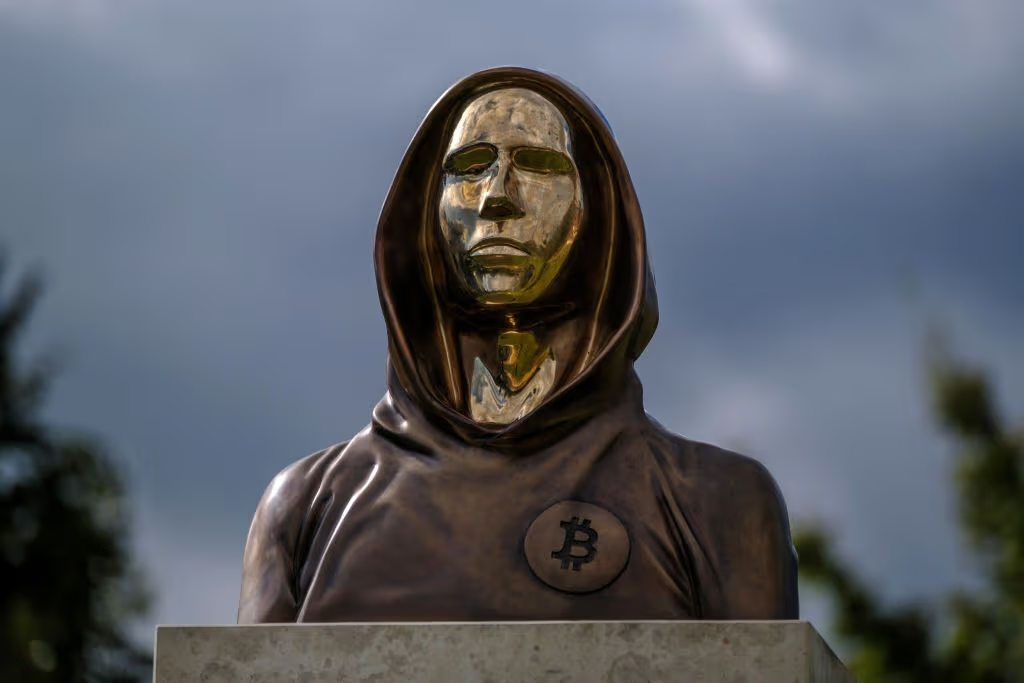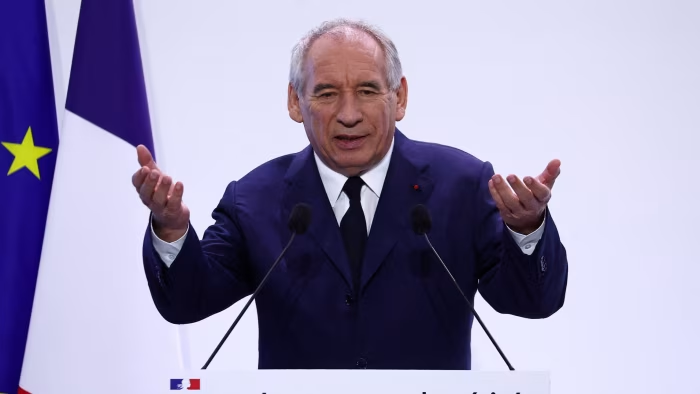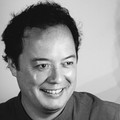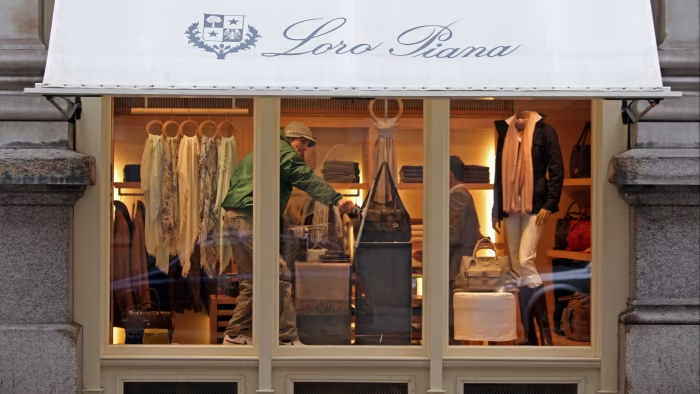Extreme Violence Without Genocide
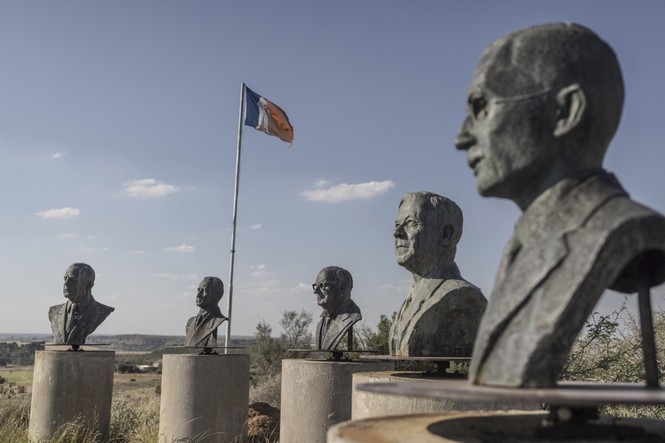
At an Oval Office press conference last month, Donald Trump described present-day South Africa as “the opposite of apartheid”—a phrase so perfectly weird that the man sitting across from him, South African President Cyril Ramaphosa, took several seconds to process it, before literally biting his lip and letting the line pass without remark.
The opposite of apartheid sounds like a compliment. (“Apartheid. Terrible!” Trump had said, just seconds before.) But Trump didn’t mean it that way. He accused South Africa of rebuilding the system of racial hierarchy that had once made it, in the words of Nelson Mandela, “the skunk of the world.” Under opposite-of-apartheid, Trump said, white South African farmers are now the victims. The reek of oppression comes from the “thousands of stories” describing their murders and the theft of their farmland. In the course of dressing down Ramaphosa, Trump dimmed the lights for a screening of a sing-along led by the South African politician Julius Malema, in which a large group chants “Kill the Boer.” (Boer is “farmer” in Afrikaans, the native language of most white South Africans.) Trump suggested that the farmers are the victims of a “genocide” and said they feared having their land taken away. And he reiterated a policy announced in February that welcomed them to resettle in America as refugees.
Ramaphosa denied that a genocide was under way. He reminded Trump that black South Africans are being killed in even greater absolute numbers, in the course of robbery and other nongenocidal crime. (South Africa’s murder rate of 42 per 100,000 people is among the world’s highest. The United States’ is 6.8; France’s is 1.5.) “There is criminality in our country,” Ramaphosa said, copping to a lesser charge. The meeting adjourned awkwardly, with Ramaphosa inviting Trump to South Africa for a state visit.
Trump will probably resist this invitation. I could not. Although Trump cheapened the word genocide by using it to describe the situation of Afrikaner farmers, many conditions that fall short of genocide are nonetheless intolerable, including living in a country of extreme and routine violence. In that way, the plight of white South Africans resembles, as Ramaphosa suggested, that of their black countrymen. When white farmers are slaughtered in their homes, their murderers’ motivations are not, as Ramaphosa suggested, always genocidal.
Signs of violent criminality are ubiquitous in South Africa. Electric fences and guard dogs protect homes containing something worth stealing. Reported rapes, carjackings, and armed robberies all occur far more frequently than in the United States. In Bloemfontein, one of the safer cities, I asked a hotel clerk for directions to a coffee shop, and she said it was “just across the road,” not more than 500 feet away. When I headed out on foot, she stopped me and said that for my safety, “I would prefer that you drive.” Driving is dangerous too. On highways, permanent signs announce that the next few miles are a “spiking hot spot,” where brigands plant obstacles to blow out tires and ambush drivers when they stop to change their flats. A couple of years ago, an American tourist rented a car at the airport in Cape Town and set up navigation on his phone. His app had an option to avoid tolls but not to avoid being shot in the face. Within an hour he was in a bad neighborhood, with his jaw hanging off his head and all his possessions gone. (He survived and vowed to sue Google Maps.)
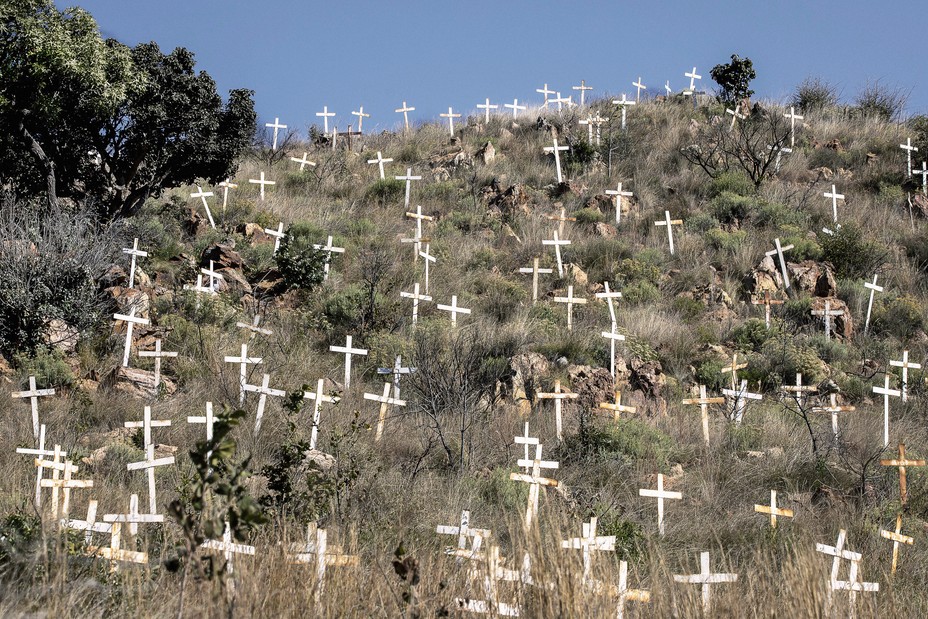
Afrikaner farmers suffer, in this context, from what might be called the Willie Sutton problem. Why rob and assault them? Because that’s where the money is. In rural areas, farmers have expensive motors and other agricultural equipment, and sometimes stashes of cash to pay workers. It stands to reason that in dangerous and thief-ridden land, the richest people would get attacked now and then. White farmers are responsible for about 90 percent of agricultural output.
A little more than a week after the Trump meeting, I was in South Africa’s Limpopo state, a center of citrus production. At an agricultural training center, I met a white fruit packer, Davon Stoltz, 29, whose story was just as horrible and lurid as Trump had implied. Stoltz sat by me in a flimsy plastic chair, in the shade of a Tipuana tree, and told me what had happened to his family on the morning of April 30.
His aunt called and begged him to come quickly. She had found his grandfather, Robert Stoltz, 78, apparently lifeless on his bathroom floor. What she saw made her rush out and refuse to go back in. Davon drove 40 miles and beat the police to the scene. He told me Robert “was in the bathroom, with his face on the ground, in the corner.” The murder weapon was a panga, a type of machete. Robert’s arms had been bound with barbed wire. “They panga-ed his face,” Davon said. “His nose was off, all his teeth out, and there was a big hole in his face and on top of his head.”
Why brutalize an old man? Davon was both disgusted and puzzled. “They didn’t take anything but his phone and his car,” he told me. The car was found rolled, not far away. “They dragged him through the kitchen. On the way, there’s a lot of things to steal.” But the TV was still there, and the cupboards were undisturbed.
Davon said the police, who were just a few miles away, dawdled and ignored key evidence. His grandfather didn’t smoke, but cigarette butts lay everywhere at the scene and remained there even after the police collected evidence, bagged up the body, and left. Only when the family came in to wash the gore from the tiles did they find the murder weapon, a homemade panga stashed above the bathroom mirror and still dripping with Grandpa’s blood. “I get angry when I talk about this,” Davon said. “The forensic team just didn’t care.” They don’t care, he told me, because “we are white.” He contrasted the indifference with the solidarity expressed by the 10 black workers on Robert’s farm, who attended the funeral and offered to help find the killers.
The family hired private investigators, and their efforts, not the police’s, yielded a suspect, Bobo Mokoena, now under arrest for the crime. Davon told me he confronted Mokoena at one of his first court appearances. Mokoena laughed at him and said he had thought the old man had money. That motivation does not satisfy Davon. “Why would you think he has money?” Robert was mostly retired, and not rich. “Why kill him? Come on. Honestly it’s because he’s white; he’s a Boer.”
Davon said mere greed could explain some roughing up, but not disfigurement and murder. “Show me where a black person is killed, and then I will show you my grandpa’s pictures, how he looked when he was killed—like my grandpa was an animal.” Davon said he was so traumatized by seeing his grandfather’s mangled face that after the corpse had been cleaned up, he asked to see it again, in hopes of replacing a gruesome sight with a sanitized one. “I tried to get that picture out of my head,” he told me. “Didn’t work. I promise you: That’s not a picture you want to see.”
I spoke with other white farmers in Limpopo who had suffered home invasions. Some, such as a woman who was beset in her kitchen by another panga wielder, had barely survived. Others managed to alert neighbors and police in time to avoid serious harm. For years, rural South Africans were spared the crime afflicting big cities—in part because the old rural security architecture, known as the Commando system, remained intact for a decade after apartheid’s end. That system—semi-militarized, with armed citizens patrolling the countryside—was tainted by its association with apartheid and disbanded in the 2000s. Now farmers are reacting to the rise in farm attacks by informally reviving it. They have hardened their defenses. They stuff guns in their trousers and have turned their farms into little islands of security, with so many cameras, drones, and surveillance monitors that in a drought year they could quit farming altogether and film a Truman Show remake.
How, in a country where violence is this common, is one to know whether it is racially motivated? It seemed possible that Davon’s grandpa was not targeted for his race, and that the cops missed the clues because of incompetence and corruption, rather than indifference to the murder of white people. (Twice I was told that to get police to consider evidence of a crime, one should bring a bribe to the precinct in the form of a tasty treat.) But it would have taken a lot of nerve to suggest to Davon and other white farmers that they ought to lighten up, when stories like theirs are so common, and “Kill the Boer” is pump-up music at political rallies. Hate speech is illegal in South Africa, but courts there have ruled that “Kill the Boer” is not to be taken literally, because the song is an anti-apartheid Communist revolutionary anthem and now no more offensive than an anti-Nazi song that calls for drubbing “the Krauts” or “the Hun.” Pleas to appreciate this nuance are less convincing when your Boer grandpa has recently been hacked to death.
Some incidents are not just grotesque but also mystifying—criminal encounters that are opaque in motivation, which leaves them open to interpret as one sees them, whether as race attacks or something else. One Afrikaner, Joachim Prinsloo, told me about a very peculiar home invasion that involved no violence at all. He said the intruder was easier to catch than he might otherwise have been, because he apparently believed that magical spells had rendered him invisible. He was found in the white family’s living room browsing Cook and Enjoy It, a classic Afrikaans cookbook, while holding it upside down. “When I spoke to him, at first he ignored me,” Prinsloo told me. “And then he was shocked that I could see him.”
White racists were preoccupied with these sometimes brutal, often extremely idiosyncratic, sometimes just strange incidents well before they became a source of outrage and fascination for Trump and people orbiting him, such as Elon Musk. They have implied that South Africa is experiencing what Zimbabwe suffered a quarter century ago: government-sanctioned attacks on white farmers, uncompensated seizure of their land, and eventually the collapse of the country’s agricultural sector and ability to feed itself. Trump referred to “over a thousand” dead farmers (upping it to “thousands” in the Q&A with reporters).
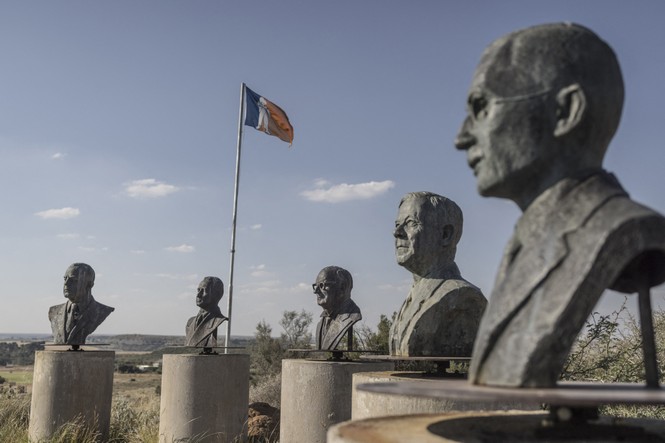
In part because of this context, many South Africans are suspicious of those who track the killings and organize farmer efforts to arm themselves and patrol their properties. AfriForum, a Pretoria-based advocacy group, does both. Even its data do not suggest organized mass killings or farm seizure resembling Zimbabwe during the late Robert Mugabe era. They count five farm murders so far in 2025, 37 in 2024, and 52 in 2023, out of roughly 27,000 annual murders in the country as a whole. But South Africa has only about 44,000 white commercial farmers, according to one estimate. AfriForum does not have complete data on the racial classification of the victims, but the group told me that in each year at least half were white, and only about 10 percent were confirmed to be nonwhite. That suggests that the murder rate for white farmers is higher than for the general population, and possibly as much as double the already very high national rate.
Kallie Kriel, AfriForum’s CEO, considers the South African government’s inattention to these killings an outrage and argues that the murder rate, rather than confessions or other statements about motives—of which there are few—shows that farmers are particularly targeted. These killings are not “ordinary crime,” he told me. He called the government’s refusal to denounce Malema—the politician who leads the “Kill the Boer” chants—“shameful,” and further evidence of non-ordinariness. (Ramaphosa distanced himself from Malema in the Trump meeting.) And Kriel noted the hypocrisy of South Africa’s position; in The Hague, South Africa is demanding that Israel punish and prevent incitement to genocide. (Indeed, the same lawyer, Tembeka Ngcukaitobi, argued both cases—for Malema’s right to chant “Kill the Boers” in South Africa, and for Israel’s obligation to shut up its own violent loudmouths there.)
Nevertheless, Kriel declined to say that “genocide” was taking place just yet, and he refused to accept one of Trump’s premises: that Afrikaners are helpless victims who need shelter abroad. He noted that Afrikaners arrived in what is now South Africa more than 100 years before my own country was founded. “If we were victims, we would just say we’re finished, and that would be that,” he told me. That was not the Boer way.
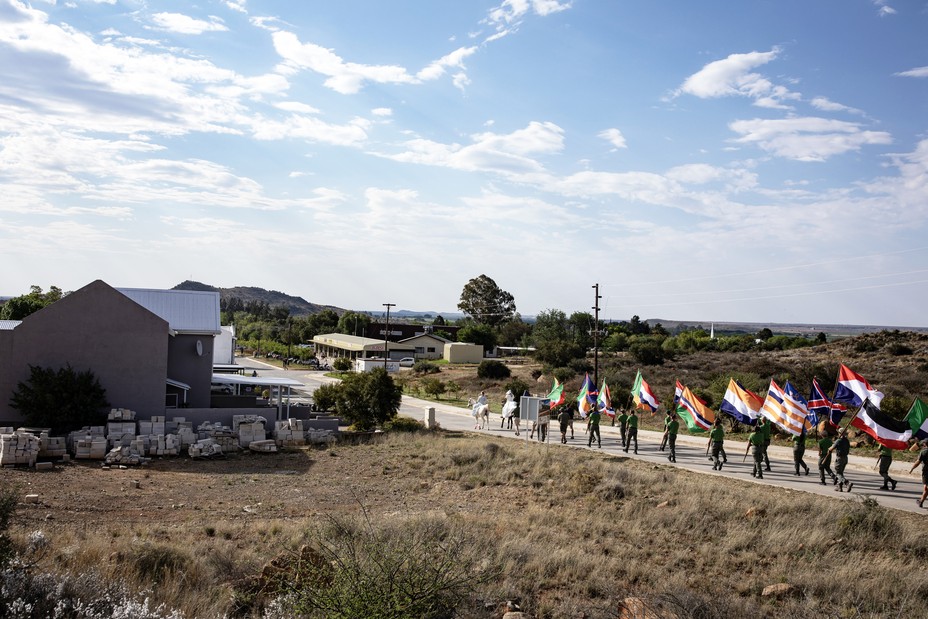
The Boer way is to dig in, to outlast challengers, and, above all, to survive. Perhaps the weirdest manifestation of this hardiness is a little town called Orania. More than three decades ago, a small band of Afrikaners responded to the end of apartheid by creating a whites-only private settlement in the Karoo, a parched scrubland in the Northern Cape near the border with the Free State. The survival and growth of this pasty rural town, which now has thousands of inhabitants, is evidence that Trump’s assessment of South Africa—that it is systematically attempting to murder its white farmers—is wrong.
Orania is probably the most openly racist place I have ever visited. That is not to say that I, who would have been classified “Asian” or “Coloured” under apartheid, felt unwelcome. As a guest, I could come and go as I pleased, and during my two-day visit, I was treated graciously. The town looked like a sedate subdivision or kibbutz or retirement community, fringed with industrial parks. It was also safe—the only place I visited in South Africa where I had no fear of petty crime or violence. Its people were nice and patient with my attempts to speak Afrikaans. Their gift shop sold me a little keychain that says Vryheid in Ons Tyd, or “Freedom in Our Time.” “Freedom from what?” I asked, without getting a good answer. Vryheid from stupid questions, I guess.
“They say we are racists, and we hate black people—which never was true,” Hennie Pelser, one of the town spokespeople and tour guides, told me. The goal of Orania, he said, was to “protect ourselves, ensure our existence, and make sure we have something for our kids to inherit.” But he told me that to live there I would need to be white, Christian, and Afrikaans-speaking, a triple whammy in my case, and I noticed that the first of the whammies was unambiguously racial. He said that Oranians performed all work, so black people spotted walking around would be intercepted and politely asked to state their business. A sign at the entrance to the town announces no crime will be tolerated, and Orania may question any suspicious person. Elsewhere in Orania, residents spoke openly of their disdain for black people: their mentality, their morality, their smell.
I met Carel Boshoff IV, Orania’s leader from 2007 to 2019 and the son of one of its founders, at a coffee shop on Orania’s main street. The son and grandson of major Afrikaner politicians, he was dressed in a tweed jacket and reading a book by Ngũgĩ wa Thiong’o, the Kenyan novelist and cultural theorist, who had died the previous day. Boshoff told me Ngũgĩ had influenced his thinking, and as we spoke I could see how. Ngũgĩ had advocated for the strengthening of “cultural freedoms” in the face of hegemonic powers.
Boshoff told me that he views Orania as “an evolutionary development towards something very fundamentally federalist.” From its beginnings in the 1990s, he said, Orania has found legal and spiritual shelter in the South African post-apartheid constitution, which recognizes “the right of self-determination of any community sharing a common cultural and language heritage.” If Zulus can have their land, why not Afrikaners? He said that Orania was conceived as a way to have an Afrikaner community, with schools and churches and security all provisioned by a recognized political entity. Boshoff said that the South African government would prefer that Orania not exist. But the constitution protects it. “They did not like it, but they could not be totally against it,” he said.
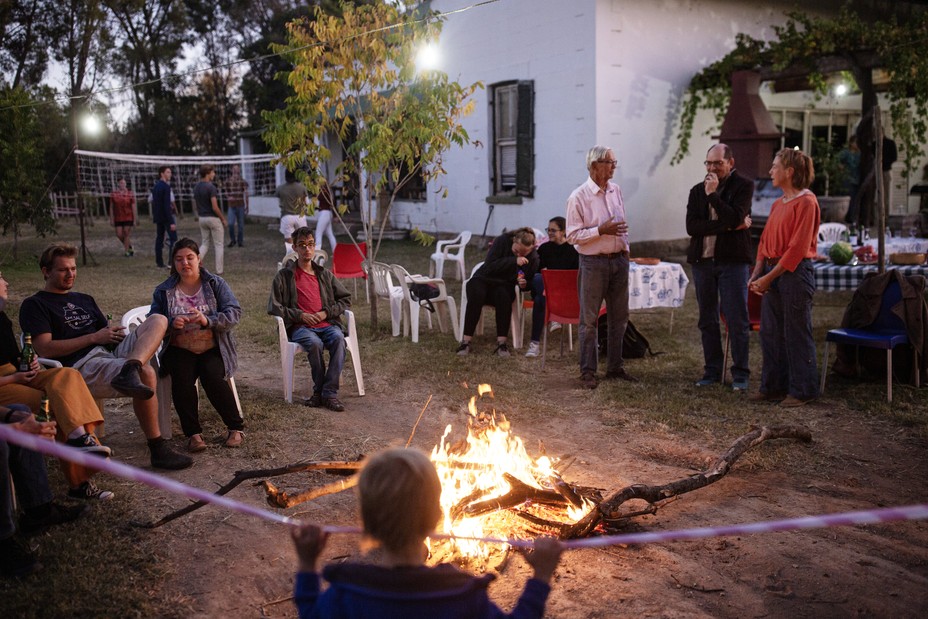
Pelser said that Orania was working well, and that Afrikaners being lured to the United States should instead come here. “We don’t have any crime,” he claimed. “We don’t have any unemployment.” He said that the Afrikaners of Orania didn’t think any work was beneath them. Because the land is private, they police themselves, admit residents according to their own criteria, and eject them even for lawful activities, such as smoking pot. Using white manual labor, he told me, made Oranians rugged and self-reliant. Pelser had previously been a banker. I asked whether the lack of black labor, and therefore cheap labor, had held Orania back. “Black labor eventually gets to you,” he said. “Having black labor costs you a lot more at the end of the day, you know.” It softens you, he said, and the presence of outsiders ultimately corrodes the community. “You should never rely on anybody else to do your work for you.”
The irony of this boring monoculture was that it was in some ways a repudiation of apartheid, and not, as it might appear, an attempt to revive it. Both systems endeavored to separate the races. But apartheid was fundamentally an attempt to keep black people out of cities while profiting from their rural labor and depriving them of political and civil rights. The Oranians, by contrast, eschewed black labor and retreated from South Africa’s cities to its countryside, just as black South Africans were doing the opposite. Orania is also a repudiation of Trump because it shows that Afrikaners can be as Afrikaner as they wish, and even openly racist, without being harassed, let alone crushed and exterminated, by the government.
I asked Boshoff what he thought of the 59 Afrikaners who came fast-tracked to America as refugees, while the Trump administration was working to halt resettlement of so many others. “The whole idea has more to do with President Trump’s politics than with ours,” he said. “It’s his agenda and his interest and might be the United States’ interest for all I know.” He was savvy enough to know that anyone seriously concerned about the survival of Afrikaners, collectively or individually, or about preventing genocide, would not approach these topics so cavalierly, and with such disregard for the efforts of Afrikaners themselves.
By leaving the place where his people had lived for 350 years, were these Afrikaners giving up, hastening a cultural suicide? He seemed very sad at the thought. The Afrikaners who came to America, he said, might find that they had lost something important by consenting to play this part in Trump’s pageant, at the price of leaving their country. “Wait for the depression to set in—the homesickness. It sits in your bones. And it is coming.”
Adblock test (Why?)



